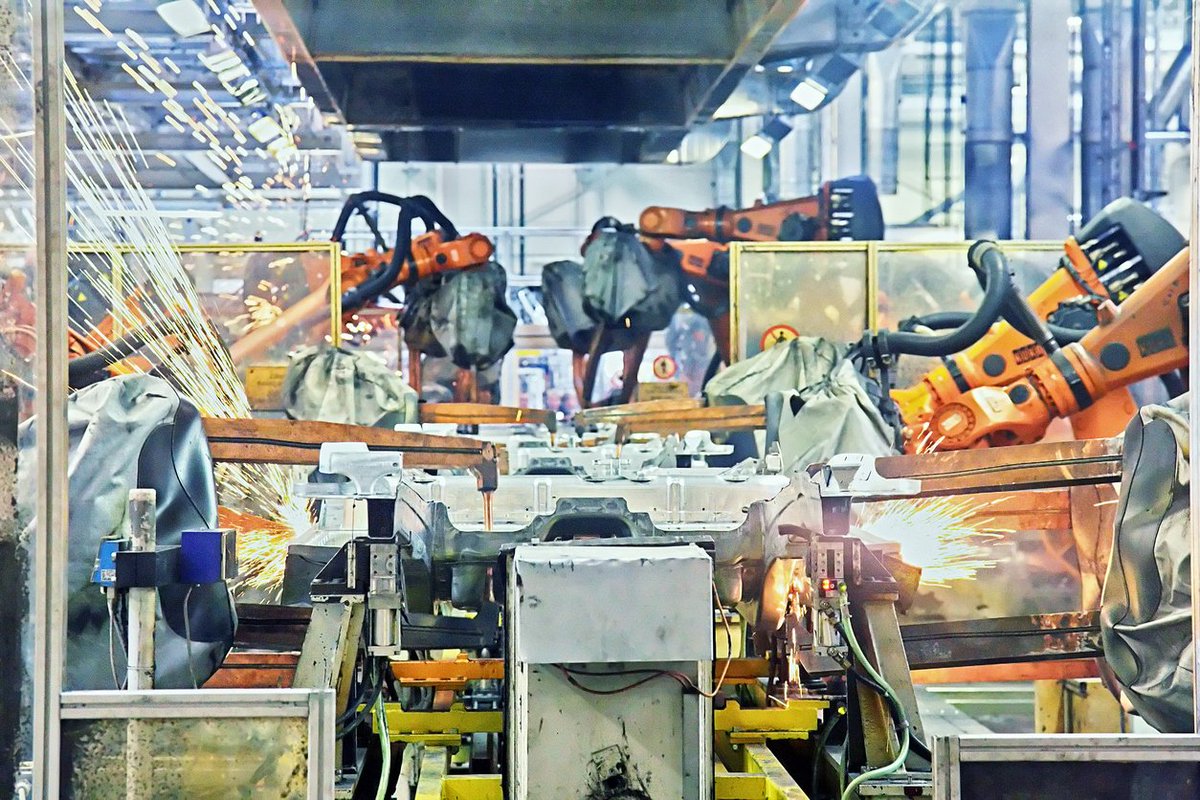Robots and new technologies are known to come over plants and factories across all manufacturing industries. In recent years, this tendency grew up even higher. Robots proved to be the only ones capable to compete on the market, and they are often cheaper for manufacturers than the similar “single-purpose” equipment.
Our consumers large and medium-sized enterprises in variety of Ukrainian industries widely integrate our Kuka robots. They prefer Kuka because Kuka is multipurpose, flexible, easier to integrate into manufacturing, and takes up less space.
To be more precise, it takes less than a day to reconfigure a robot to perform a completely different task. For example, this month you received a huge order to cut saddle-type holes in pipes. Not a problem. You mount a mechanized plasma cutter, configure your robot, and cut a huge batch of pipes. A month later (or even more, if you were lucky with the pipes), your old associate Dmytro orders you to weld boilers; because his welders left for winter vacations and the deadlines did not. Neither this is a problem to you, too. You go to the warehouse, get “semi-automatic” welding inverter with robotic burner, write a program for your robot to weld these boilers, and here you go, your robot is a welder now. Or, let’s say, you can make an arrangement and employ your robot as a night shift loader. You already know how to do that, don’t you? You change the robotized burner to “hand”, write a program, and voila!
Answering the question “Who are the consumers of these solutions?” we dare say completely all industries, with no exception. Robotic systems, cells and single manipulators are capable to perform absolutely any task. Everything they need is qualified engineers and good managers, who can wisely combine human and robotic labour.
Top 9 industries that proved to have employed robots the most:
-
- Arc welding.
- Automotive.
- Electronic.
- Chemical.
- Cement.
- Paint and varnish.
- Steel casting.
- Machine-tool construction;.
- Food industry.
Top operations that robots are performing right now all over the world?
– Welding. Arc welding MIG / MAG, TIG, contact and laser welding.
– Assembly of mechanical, electrical and electronic parts.Almost all classy automotive manufacturers, in Germany, Japan, the Czech Republic, the United States, China, employ robots at their plants.
– Shaping, cutting and milling in processing of metals, stone, plastic, foam. Plus, 5D processing.
– Palletizing & de-palletizing. The world industry tends to revert to robotics in packaging and storage of products. Robots transfer not only sacks, and boxes, but also small washer-sized objects, and cooperate with other equipment.
– Servicing of machine-tools and machines. More and more plants in Europe, America, and China are successfully using robots to service their conveyor tracks, significantly increasing their productivity. They transfer materials, products, parts and blanks from one machine-tool to another, from one conveyor to another, perform stacking, work with pallets, place parts in containers, perform drilling, milling, riveting, cutting with water jet, cleaning, grinding, polishing, and other operations).
– Automated painting– spray coating.
– Processing of food products: ultrasonic cutting, sorting, quality control, damage-free product packaging, loading and unloading, palletizing.
In Ukraine, robots are most often used in the automotive, chemical and electronics industries, for cutting, welding, sorting, packaging, and palletizing / de-palletizing. The most influential enterprises that use robotic systems are Procter & Gamlbe, Henkel, AvtoZAZ, and Carlsberg Ukraine. Ukrainian industries do not integrate robots as widely as in Europe, the United States, or Asia. One can judge based on the ratio of robots to employees, in an area. The average world index makes 60 robots per 10 000 employees, while in South Korea it reaches 400 robots, in Japan – 340, in Germany – 280. In Ukraine, it is 1 robot per 20,000 employees. Still, rise of prices for energy resources and raw materials, along with the state’s raising of minimum wages make manufacturers reduce the cost of production. And in 2016, on the territory of Ukraine, the business purchased about 15 used and 5 new robots.

